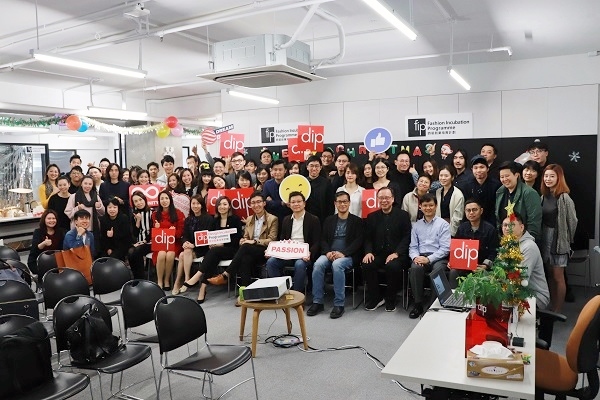Sailing Through Challenges on the Way to Design Entrepreneurship
When it comes to the career goal of designers, chances are they want to, one day, establish their own design companies and create successful brands. They may not have realised, though, that they are heading towards the path to entrepreneurship. It may not be something they are prepared for — it is not something they were taught at school, after all. The best and probably the only way to become a design entrepreneur is to actually start a business and learn the ropes on the job.
The Design Incubation Programme (DIP) has nurtured more than 200 design startups since its launch in 2006 with the support of the government. It provides a wide range of much-needed supports for designers who are making their first step into the entrepreneurial realm. Every quarter, incubatees gather at the networking session to meet and exchange as a community. In the session last December, Day Lau and Queenie Fan from Cafuné and Leo Yiu and Louise Loong from Pong were invited to share their work and experience. DMatters spoke further with them about the challenges they have been facing while making great strides.
Day and Queenie are childhood friends and business partners of their label Cafuné founded in 2015. The young accessories brand has the ambition to gain a foothold in the luxury handbags market with a sleek, minimalistic and timeless aesthetic. They found marketing to be a challenge, “we invested some time to think through our values, visions and positioning. It helped us create a more consistent brand story.” They realised customers in Hong Kong are more inclined to foreign brands. While they strive for local recognition, it is apparent that they have to expand to global markets. “DIP’s support enables us to join fashion weeks and trade shows in major fashion markets so that we can meet new buyers and gain exposure to the press.” It has been proven critical for their early growth.
Product design studio Pong is the brainchild of Leo. They had a fruitful 2018 with recognition gained from the Red Dot Design Award and the Hong Kong Smart Design Awards. Their heartwarming train grab handle design ‘Hold Tight’ grabbed a lot of attention in the DesignInspire exhibition showcase. But sure enough, they have their own challenges, in particular when it comes to funding the operation and the prototyping. “There are many good design companies in Hong Kong and it’s competitive. It’s down to finding our distinctive positioning so that clients can see how we are different from others.” Leo said the key is to be open-minded and be positive towards failures. DIP’s mentors have also played a useful part. “Their advice is very practical. They understand our perspective and struggles and genuinely hope we can be mature enough to negotiate with clients."
Ushering to the new year, we asked them about their goals for 2019. Cafuné targets to gain bigger shares in existing markets, “we also want to explore new markets such as the Middle East and Scandinavia, and expand our team.” Pong hopes to design and launch more new products, “especially our own-brand products. And we hope more people will come to know about us.”


